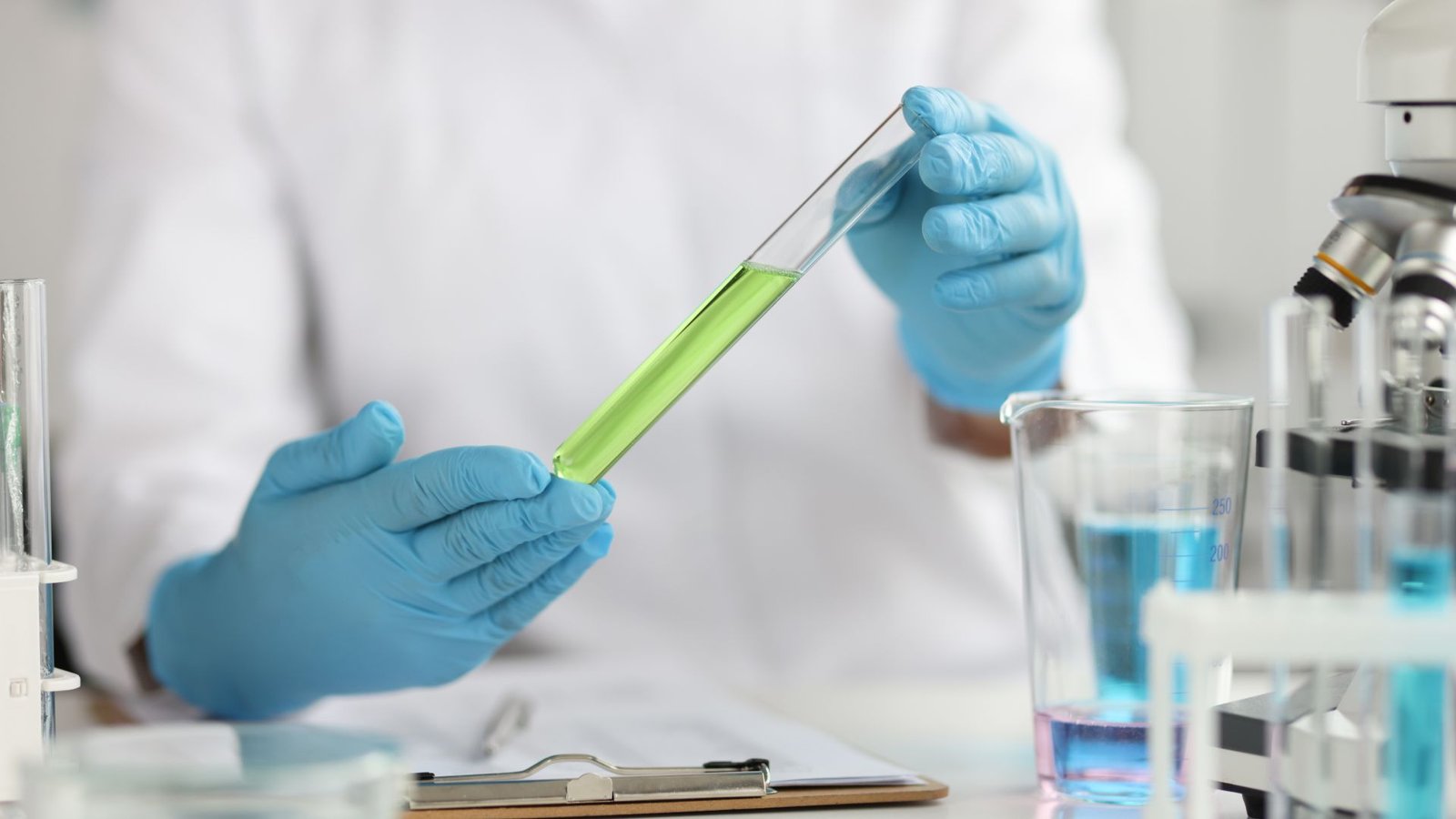A
Analytical Instrument
A device or a combination of devices used to carry out an analytical process. The analytical process is all or part of the analytical procedure that encompasses all steps from the introduction of the sample or the test portion to the production of the result. An analytical instrument may carry out single or multiple analytical procedures. In the latter case it may be selective, i.e. designed to carry out any requested combination of procedures within the set, on each specimen.
Source: Compendium of Chemical Terminology, 2nd ed. (the "Gold Book")
Activation Analysis
A kind of elemental or isotopic analysis based on the measurement of characteristic radiation from nuclides formed directly or indirectly by activation of the test portion. In general, a specification is added of the type of the incident radiation (e.g. neutron, photon) and its energy (e.g. thermal, fast).
Source: Compendium of Chemical Terminology, 2nd ed. (the "Gold Book")
Automation
Mechanization with process control, where process means a sequence of manipulations. One or several functions in an analytical instrument may be automated.
Source: Compendium of Chemical Terminology, 2nd ed. (the "Gold Book")
B
Backscatter
Scattering of radiation in a generally backward direction. In the assay of radioactivity, it applies to the scattering of radiation into the radiation detector from any material except the sample and the detector. In light scattering, it is said to occur when the scattering angle, θ, is 180°. Conversely, forward scattering occurs when θ is 0°.
Source: Compendium of Chemical Terminology, 2nd ed. (the "Gold Book")
C
Calibration
The set of operations which establish, under specified conditions, the relationship between values indicated by the analytical instrument and the corresponding known values of an analyte.
Source: Compendium of Chemical Terminology, 2nd ed. (the "Gold Book")
D
Detection Limit
The minimum single result which, with a stated probability, can be distinguished from a suitable blank value. The limit defines the point at which the analysis becomes possible and this may be different from the lower limit of the determinable analytical range.
Source: Compendium of Chemical Terminology, 2nd ed. (the "Gold Book")
Diagram Level
A level described by the removal of one electron from the configuration of the neutral ground state. These levels form a spectrum similar to that of a one-electron or hydrogen-like atom but, being single-valency levels, have the energy scale reversed relative to that of single-electron levels. Diagram levels may be divided into valence levels and core levels according to the nature of the electron vacancy. Diagram levels with orbital angular momentum different from zero occur in pairs and form spin doublets.
Source: Compendium of Chemical Terminology, 2nd ed. (the "Gold Book")
E
Effective Half Life
For a radioactive substance, the time required for the amount of that substance in a biological system to be reduced to one half of its value by both radioactive decay and biological processes, when the rate of removal is approximately exponential.
Source: Compendium of Chemical Terminology, 2nd ed. (the "Gold Book")
Electron Stopping Power
When a beam of electrons strikes a target or specimen there are three ways in which the electrons may lose energy (low energy collisions, X-ray production, and formation of a spectral continuum). The average energy loss per unit distance travelled along the electron path is called electron stopping power.
Source: Compendium of Chemical Terminology, 2nd ed. (the "Gold Book")
F
Feedback
The process whereby the output of a device is used to modify the operation of an analytical instrument.
Source: Compendium of Chemical Terminology, 2nd ed. (the "Gold Book")
Fraction Collector
A device for recovering fractional volumes of the column effluent.
Source: Compendium of Chemical Terminology, 2nd ed. (the "Gold Book")
G
Group Preconcentration
An operation (process) as a result of which several microcomponents are isolated in one step. This may be achieved in one of two ways, by transportation either of the matrix or of the microcomponents into a second phase. The first method is widely used in the analysis of relatively simple substances and materials.
Source: Compendium of Chemical Terminology, 2nd ed. (the "Gold Book")
H
Homogeneity
The degree to which a property or a constituent is uniformly distributed throughout a quantity of material. A material may be homogeneous with respect to one analyte or property but heterogeneous with respect to another. The degree of heterogeneity (the opposite of homogeneity) is the determining factor of sampling error.
Source: Compendium of Chemical Terminology, 2nd ed. (the "Gold Book")
I
Imprecision
Variation of the result in a set of replicate measurements. This can be expressed, e.g. as the standard deviation or coefficient of variation (relative standard deviation). This term may have a more general meaning, e.g. if the replicates constitute a batch or involve different instruments, laboratories and analyst.
Source: Compendium of Chemical Terminology, 2nd ed. (the "Gold Book")
J
Job Safety Analysis
A job safety analysis (JSA) is a procedure which helps integrate accepted safety and health principles and practices into a particular task or job operation. In a JSA, each basic step of the job is to identify potential hazards and to recommend the safest way to do the job. Other terms used to describe this procedure are job hazard analysis (JHA) and job hazard breakdown.
K
Kinetic Method
An analytical method in which the rate of a reaction or a related quantity is measured and utilized to determine concentrations.
Source: Compendium of Chemical Terminology, 2nd ed. (the "Gold Book")
L
Laboratory Sample
The sample or subsample(s) sent to or received by the laboratory. When the laboratory sample is further prepared (reduced) by subdividing, mixing, grinding or by combinations of these operations, the result is the test sample. When no preparation of the laboratory sample is required, the laboratory sample is the test sample. A test portion is removed from the test sample for the performance of the test or for analysis. The laboratory sample is the final sample from the point of view of sample collection but it is the initial sample from the point of view of the laboratory. Several laboratory samples may be prepared and sent to different laboratories or to the same laboratory for different purposes. When sent to the same laboratory, the set is generally considered as a single laboratory sample and is documented as a single sample.
Source: Compendium of Chemical Terminology, 2nd ed. (the "Gold Book")
M
Matrix
The components of the sample other than the analyte.
Source: Compendium of Chemical Terminology, 2nd ed. (the "Gold Book")
N
Nominal Linear Flow
The volumetric flowrate of the mobile phase divided by the area of the cross section of the column (cm min−1) i.e. the linear flowrate in a part of the column not containingpacking.
Source: Compendium of Chemical Terminology, 2nd ed. (the "Gold Book")
O
Open-Tubular Column
A column, usually having a small diameter, in which either the inner tube wall, or a liquid or active solid held stationary on the tube wall acts as the stationary phase and there is an open, unrestricted path for the mobile phase.
Source: Compendium of Chemical Terminology, 2nd ed. (the "Gold Book")
P
Packing
The active solid, stationary liquid plus solid support, or swollen gel put in the column. The term packing refers to the conditions existing before the chromatographic run is started (i.e. to the material introduced into the column), whereas the stationary phase refers to the conditions during the run.
Source: Compendium of Chemical Terminology, 2nd ed. (the "Gold Book")
Q
Qualitative Analysis
Analysis in which substances are identified or classified on the basis of their chemical or physical properties, such as chemical reactivity, solubility, molecular weight,melting point, radiative properties (emission, absorption), mass spectra, nuclear half-life, etc.
Source: Compendium of Chemical Terminology, 2nd ed. (the "Gold Book")
Quantitative Analysis
Analyses in which the amount or concentration of an analyte may be determined (estimated) and expressed as a numerical value in appropriate units. Qualitative analysis may take place without quantitative analysis, but quantitative analysis requires the identification (qualification) of the analytes for which numerical estimates are given.
Source: Compendium of Chemical Terminology, 2nd ed. (the "Gold Book")
R
Radiation
A term embracing electromagnetic waves as well as fast moving particles. In radioanalytical chemistry the term usually refers to radiation emitted during a nuclear process (radioactive decay, nuclear reaction, nuclear fission, accelerators).
Source: Compendium of Chemical Terminology, 2nd ed. (the "Gold Book")
S
Sample Handling
Any action applied to the sample before the analytical procedure. Such actions include the addition of preservatives, separation procedures, storage at low temperature, protection against light and irradiation, loading, etc.
Source: Compendium of Chemical Terminology, 2nd ed. (the "Gold Book")
T
Trace Element
Any element having an average concentration of less than about 100 parts per million atoms (ppma).
Source: Compendium of Chemical Terminology, 2nd ed. (the "Gold Book")
U
Universal Calibration
A calibration of a size-exclusion chromatography set-up based on the finding that the retention volume of a molecular or particulate species is a single-valued function of an appropriate size parameter of this molecule or particle, irrespective of its chemical nature and structure. The product of the intrinsic viscosity and molar mass, [η]M, has been widely used as the size parameter.
Source: Compendium of Chemical Terminology, 2nd ed. (the "Gold Book")
V
Vapour Phase Interference
Interference caused by a change in the fraction of analyte dissociated, ionized or excited in the gaseous phase. (Note: here 'dissociation' means the formation of free neutral atoms from free molecules in the gaseous phase. The term atomization is here not appropriate because the latter also covers the formation of free atomic ions.) These interferences may be called dissociation, ionization and excitation interference, respectively.
Source: Compendium of Chemical Terminology, 2nd ed. (the "Gold Book")
W
Wavelength Error
The error in absorbance which may occur if there is a difference between the (mean) wavelength of the radiation entering the sample cell and the indicated wavelength on the spectrometer scale.
Source: Compendium of Chemical Terminology, 2nd ed. (the "Gold Book")
X
X-ray Spectroscopy
X-ray spectroscopy consists of three steps: (a) excitation to produce emission lines characteristic of the elements in the material, (b) measurement of their intensity, and (c) conversion of X-ray intensity to concentration by a calibration procedure which may include correction for matrix effects.
Source: Compendium of Chemical Terminology, 2nd ed. (the "Gold Book")
Y
”Yield”
Z
Zone
A region in the chromatographic bed where one or more components of the sample are located. The term band may also be used for it.
Source: Compendium of Chemical Terminology, 2nd ed. (the "Gold Book")
#
Please note: While every effort has been taken to ensure the accuracy of the definitions of the terms above, errors may still be present. If any are noted, please contact us so that we can rectify them promptly.
Our Partners and Stakeholders
Our Latest Blog Posts
TEA Labs Achieves Accreditation for Metallurgical Laboratory
In a significant stride for Namibia’s scientific and industrial landscape, we have officially received accreditation for our Metallurgical Laboratory (TEA MET), just one year after commencing operations in 2023. The laboratory, which forms part of our broader scientific service offering, was established with a clear purpose: to provide accurate, timely,…
TEA Laboratories’ ultimate getaway
TEA Laboratories’ ultimate getaway: A Goanikontes adventure of team bonding. In a world of test tubes and scientific breakthroughs, TEA Laboratories decided it was time to break free from the confines of their sterile environments and embark on a thrilling adventure. Destination: Goanikontes. The goal: Team bonding, improved communication, and…
TEA Laboratories Embraces Innovation and Education
TEA Laboratories, a trailblazer in metallurgical and radiation testing, proudly announces the success of its internship program with the inclusion of eight dynamic interns contributing to groundbreaking research at both the Metallurgical and Radiation Laboratories. This internship opportunity at TEA Laboratories is a testament to our commitment to fostering the…
TEA-METALLURGICAL LABORATORY launches first multi-million Namibian owned laboratory facility
Trace Elements Analysis Laboratories Holdings (Pty) Ltd. proudly announces the launch of TEA-METALLURGICAL LABORATORY, the first multi-million Namibian-owned laboratory facility of its kind. The laboratory was first softly launched in Windhoek on August 30, 2023, coinciding with the inaugural day of the Mining Expo, and subsequently in Swakopmund on September…
What are ISO standards and why do they matter?
ISO standards are a set of best practices and regulations that govern international trade and business operations. Adherence to these standards is essential for any organisation that wants to remain competitive globally.
The Winter Charity Drive – June 2023
Charity starts at home. We are sure many have heard this saying before. You learn to give because you have been taught to give. It is then, that you know that giving is not only the act of extending your hands, but it is making sure that your heart extends…
How mining works
"How Mining Works" by W. Scott Dunbar is an in-depth and comprehensive guide to the mining industry. The author provides a detailed overview of the mining process, from exploration and discovery to extraction and processing.
How a compliance inspection ensures the health and safety of mine workers
When it comes to the health and safety of miners, the role of chemists cannot be underestimated. Mining is one of the most dangerous occupations in the world, and chemists play a vital role in ensuring that the risks associated with mining are minimized.
Vogel’s Quantitative Chemical Analysis
“Vogel’s Quantitative Chemical Analysis (6th edition)” by Arthur Israel Vogel is a comprehensive and authoritative textbook on the principles and techniques of quantitative chemical analysis.












